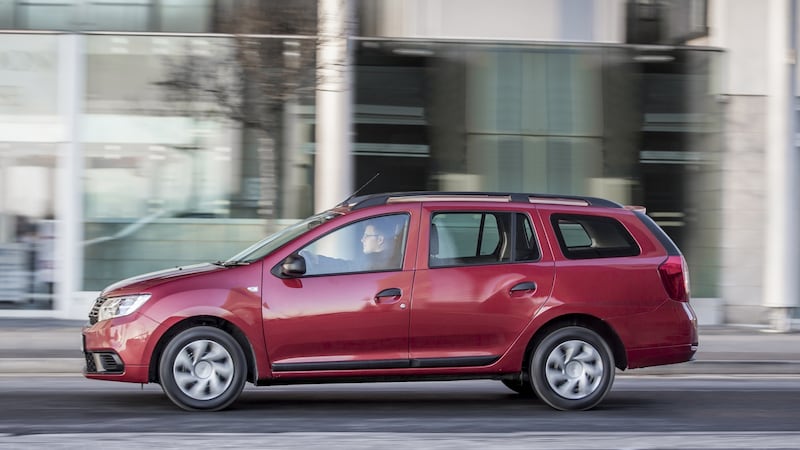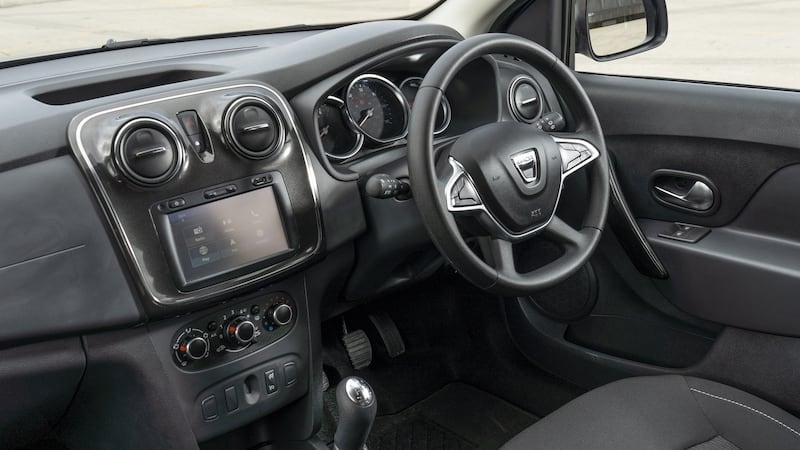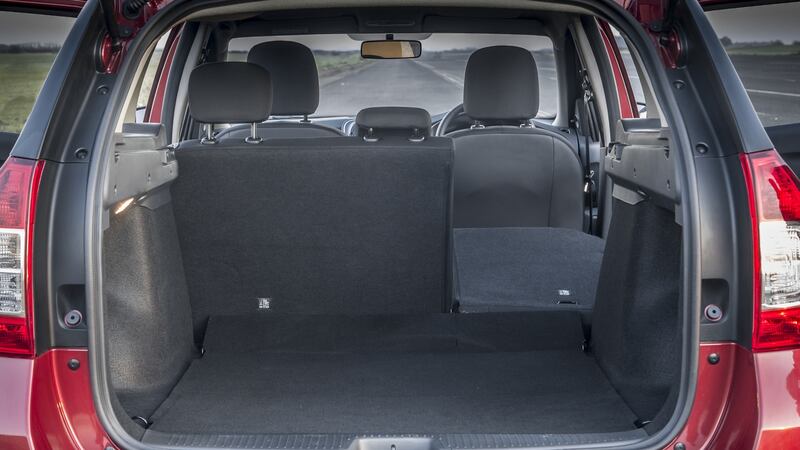It can be a false economy to buy in bulk. Doubtless, everyone who so rapidly denuded shops of toilet paper at the beginning of March has now learned that – there was no shortage, the shops stayed open, and now your spare room is still full of unused rolls, bought in bulk. Equally, buying meat in big batches, unless you happen to have a chest freezer out the back, is unlikely to reap dividends and is much more likely to simply stink up your fridge (to say nothing of what it might do to your innards).
Is it worth buying a car in bulk? Or, to be more precise, is it worth buying a car on the basis of cubic capacity per euro? It may just be. After all, as American car enthusiasts always put it, there ain’t no replacement for displacement. Admittedly, they were talking about the capacity of the engine, but the same can be true for the other end of the car. . .
Now, when a car includes "rear wash-wipe" as one of its standard equipment highlights, you know you're not getting a Rolls-Royce

Estate cars are, on the whole, ignored by Irish buyers, but I wonder will that change in the coming months? Will the reversal of economic fortunes at last reveal the swizz that most tall-but-not-especially-useful SUVs really are? Will such a realisation send buyers running into the metaphorical arms of much more practical estates? Probably not, but it would at least be the merest sliver of a silver lining if it did.
Should that come to pass, then I can – potentially – see a lot of love for the diminutive (on the outside) yet massive (on the inside) Dacia Logan MCV. Ignore for a moment that the MCV bit, somewhat cringingly, stands for "maximum capacity vehicle" and you'll see that this elongated Sandero is actually the best car that Dacia makes.

Well, it is in a manner of speaking. Actually, on a technical level, the generally very impressive new Duster is the best car that Dacia currently makes, but it’s an SUV and let’s remind ourselves that SUVs are, first and foremost, about image, not utility. In a market where every cent will count, let’s discount that image, shall we? In fact, let’s ignore it altogether.
Finance plan
Being based on the Sandero hatchback gifts the Logan a number of advantages (and a few disadvantages). Chief among the advantages is that it’s cheap. Like, hilariously so. You can get a Signature-spec model – that’s one up from basic Logan – for €14,840, which translates to €191 a month on an indicative finance plan. Now, when a car includes “rear wash-wipe” as one of its standard equipment highlights, you know you’re not getting a Rolls-Royce.
Still, the Signature Logan is not appallingly hair-shirt in its nature (you can get a truly basic one for just €13,140). You get front electric windows (maybe try fooling the kids that the manual ones in the rear are a keep-fit addition), you do get cruise control and a speed limiter, you get a seven-inch touchscreen (albeit with pretty creaky graphics that have more than a whiff of Commodore 64 about them). You even get air conditioning and rear parking sensors.

Those sensors are hugely important because of the Logan’s one true trump card – its boot. The rear end has been massively distended, to the point where it almost looks as if a regular Sandero has backed into a packing crate and driven off with it still attached.
Lugging chattels
Pretty it’s not, but effective it is, bringing the overall length up to 4.5m, and granting the Logan a boot volume of 573 litres. That’s a whopper. You’d have to spend about twice as much to get any car with a comparable or bigger boot than that. If you’re regularly lugging around kids and their chattels, dogs, or just loading up a big weekly shop, the Logan really is pretty hard to beat.
On the downside, all of the Logan’s extra length (and the overhang behind the rear wheels measures slightly more than a metre) is reserved for the boot and nothing but the boot. The rear seats remain pretty cramped for anyone of teenager height or above.
It's surprisingly good on long motorway trips, where the soft ride quality and relatively good refinement count
Up front, comfort is acceptable for most, and the overall cabin layout and quality aren’t bad, but there are still more than a few rough edges (literally – mind you don’t catch the back of your hand on sharp plastic edges when reaching for the bonnet release) that have been eradicated in the newer Duster, just for one example. Recent updates to the Logan’s cabin have definitely helped – the new four-spoke steering wheel in particular.
To drive, the Logan is. . . not that bad, actually. I mean, if you came here looking for pin-sharp cornering or performance to put Lewis Hamilton in the corner, I'm afraid I can't help you. That said, though, the Logan is fine. It goes, stops and steers with a modicum of alacrity and the 1.0-litre TCe turbo petrol engine is actually really very good, and has decent economy.
It’s surprisingly good on long motorway trips, where the soft ride quality and relatively good refinement count. Basic models come with a non-turbo 75hp engine which needs to be thrashed pretty hard to keep up with flowing traffic, and more recently Dacia has added a new 95hp diesel engine, but that pushes the price up just a touch too high and it’s rather too noisy.
The whole point of this is, after all, maximising usefulness while minimising cost. Plump for the 90hp turbo engine and you're looking at a price tag of €16,540, which seems more than reasonable. All of that room out of the back means you'll still be cramming in bags of shopping, or boxes of Ikea detritus, when anyone who's spent more on a Duster has long had to go home, or explore delivery options. That's the kind of pleasantly smug sensation that only this kind of a lack of money can buy.















